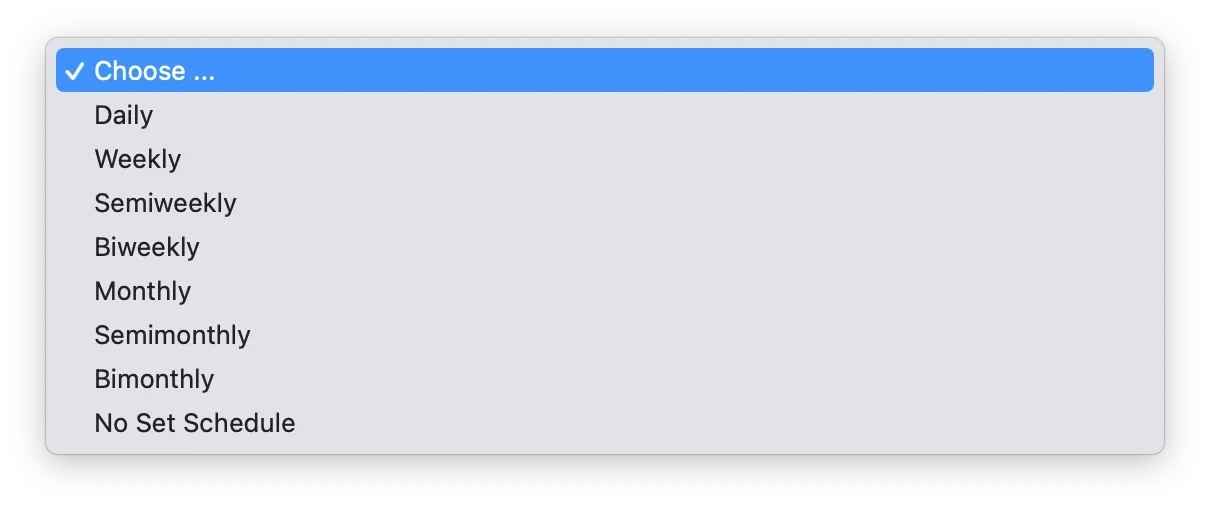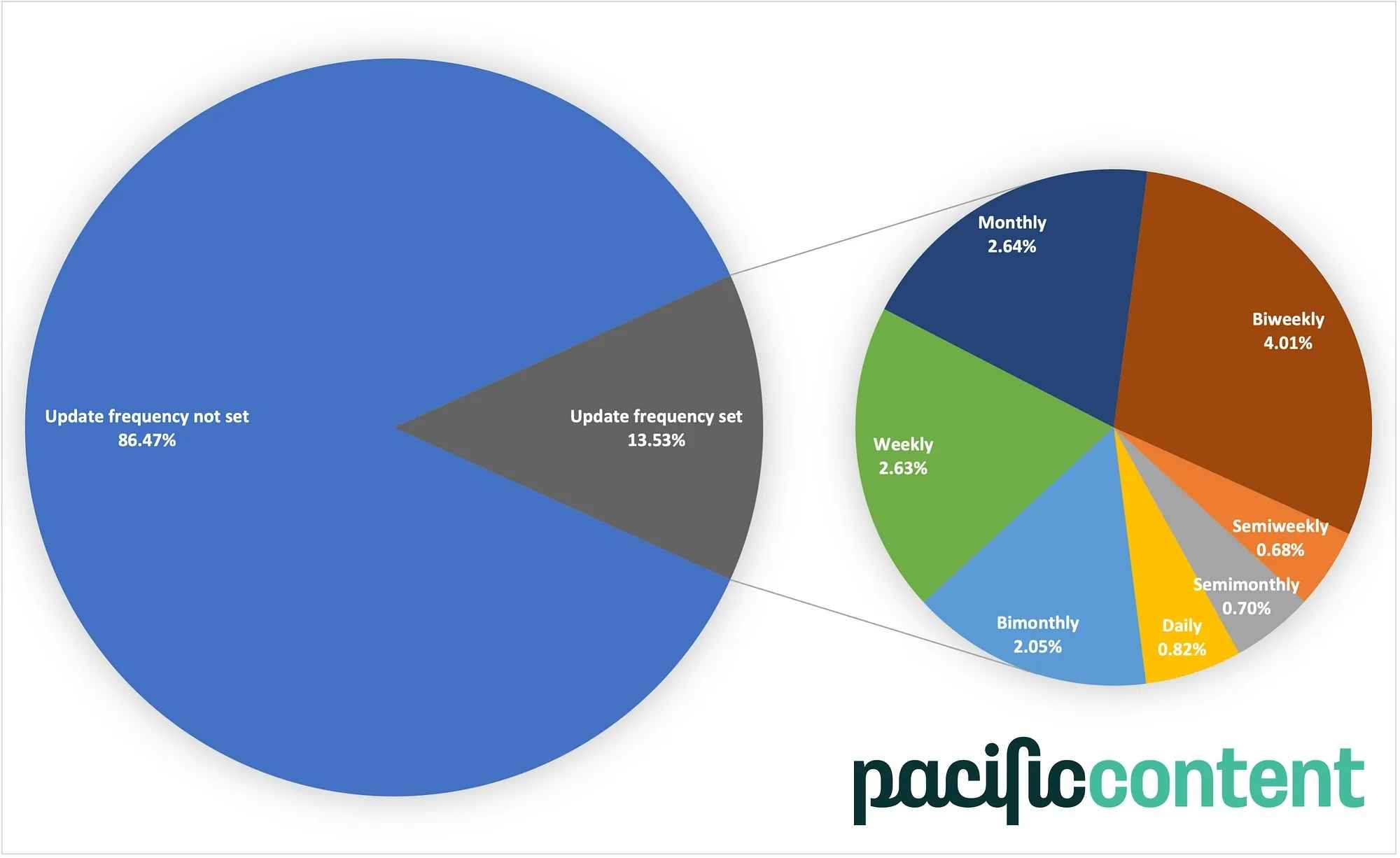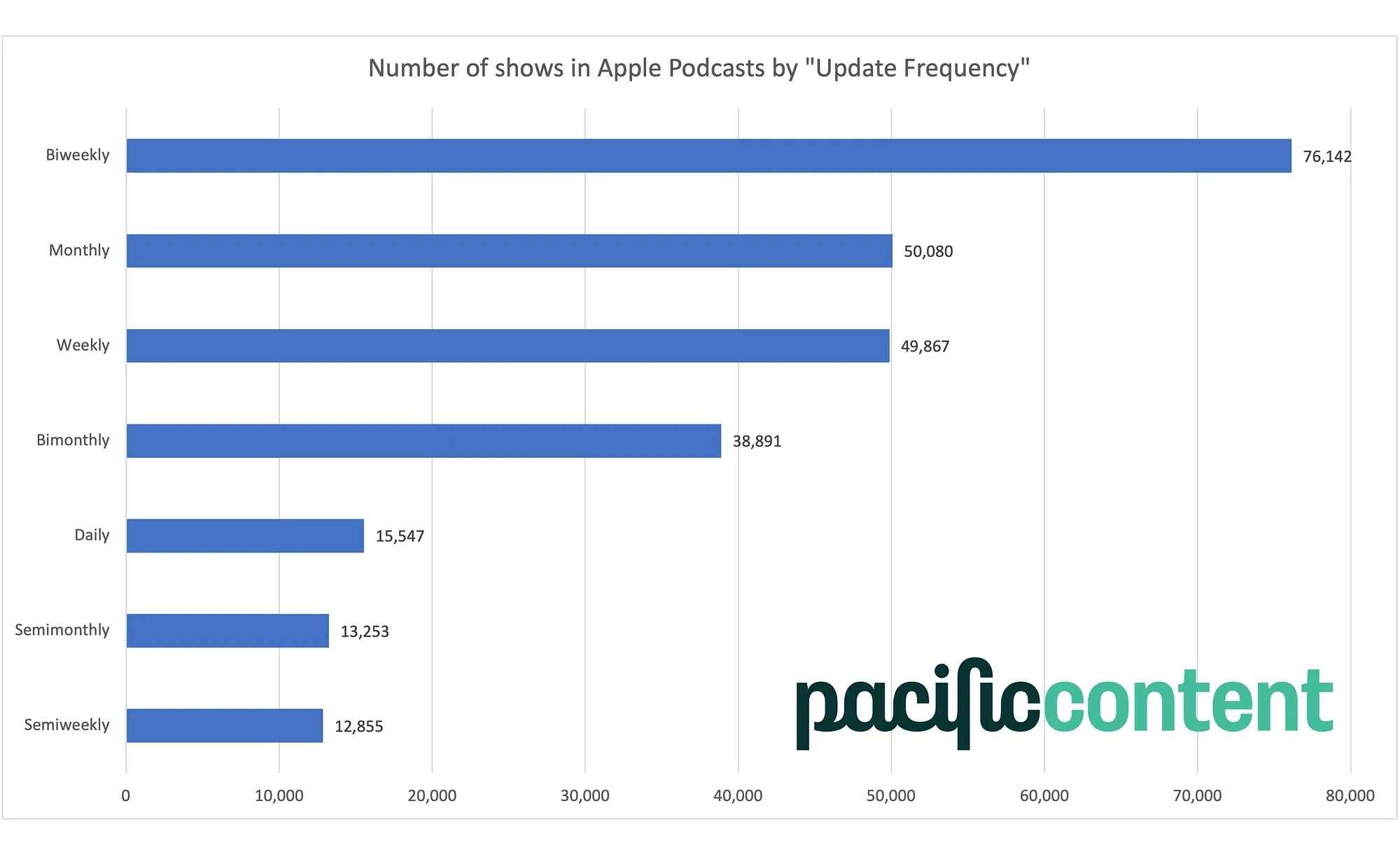How often are most podcasts updated?

In April 2021, Apple rolled out significant changes to Apple Podcasts Connect, a tool many podcasters use to manage and measure their shows.
Among the changes: publishers can now specify an “Update Frequency” for their shows. According to Apple, this setting:
shows up in Apple Podcasts and lets your listeners know how often you plan to update your show with new episodes.
Apple Podcasts Connect offers seven options: daily, weekly, semiweekly, biweekly, monthly, semimonthly, bimonthly, plus a “no set schedule” choice. The options are listed in a drop-down menu within the “Show Details” section of Apple Podcasts Connect:

Once a podcaster chooses an update frequency for their show, it appears alongside other series-level metadata in the Apple Podcasts apps for iOS and Mac:

This can be a helpful piece of product packaging for podcasts. By listing an update frequency (aka release cadence), you’re helping prospective listeners decide if your show could fit into their lives. Sharing your show’s release cadence helps set and maintain listener expectations.
Apple Podcasts isn’t the first listening app to prominently feature a show’s release cadence. Other apps (including Overcast, Pocket Casts, and Breaker) share a similar feature. But these apps infer release cadence based on a show’s past release schedule, whereas Apple relies on individual publishers to explicitly choose an update frequency.
Three additional implementation details worth noting:
- Unlike many other elements of product packaging for podcasts, Apple’s update frequency is not configured using a tag in the show’s RSS feed. Rather, it’s set on a show-by-show basis within Apple Podcasts Connect.
- Apple’s update frequency names are ambiguous. What does “biweekly” mean? Depends on who you ask.
- Apple’s update frequency setting does not reflect how often episodes of a podcast are actually released. It simply signals the podcaster’s intended release cadence.
What’s the most common update frequency?
Shortly after Apple introduced its update frequency setting, I began to wonder:
- How many podcasters will bother to set this up?
- Among those who do, what will be the most popular update frequency selected?
To find out, I grabbed a sample of 1,896,631 podcasts from the Apple Podcasts directory and dug in.
Of all the podcasts I sampled, 256,635 had a releaseFrequency value set to one of the seven available options (daily, weekly, semiweekly, biweekly, monthly, semimonthly, bimonthly).
As I write this, Apple Podcasts update frequencies have been around for about 10 weeks. So far, about 14% of all shows in Apple Podcasts have set an update frequency.
So which frequency is the most popular choice?
Here’s the breakdown:

Or, for the pie-chart-averse:

With ~76k shows, “biweekly” is clearly the top choice.
But what exactly does “biweekly” mean? Or perhaps a better question: what do individual podcasters think “biweekly” means?
It could mean “a new episode every two weeks.” It could also mean “two episodes each week.” As Mignon Fogarty says of “semiweekly” and “biweekly”:
Most style guides recommend avoiding these words. Instead, just use the phrases “twice a week” or “every other week.”
However, podcasters interpret the word, “biweekly” as most certainly the most popular update frequency within Apple Podcasts.
Remember
- Your podcast’s release cadence is an important part of your show’s product packaging.
- The most popular podcast release frequency is “biweekly.”
- Apple Podcasts now allows publishers to set an “update frequency” for their shows. If you haven’t configured your shows’ update frequency, look for the setting in “Show Details” within Apple Podcasts Connect.
- Consistency over time correlates with podcast success.
Sign up for the Pacific Content Newsletter: audio strategy, analysis, and insight in your inbox.
